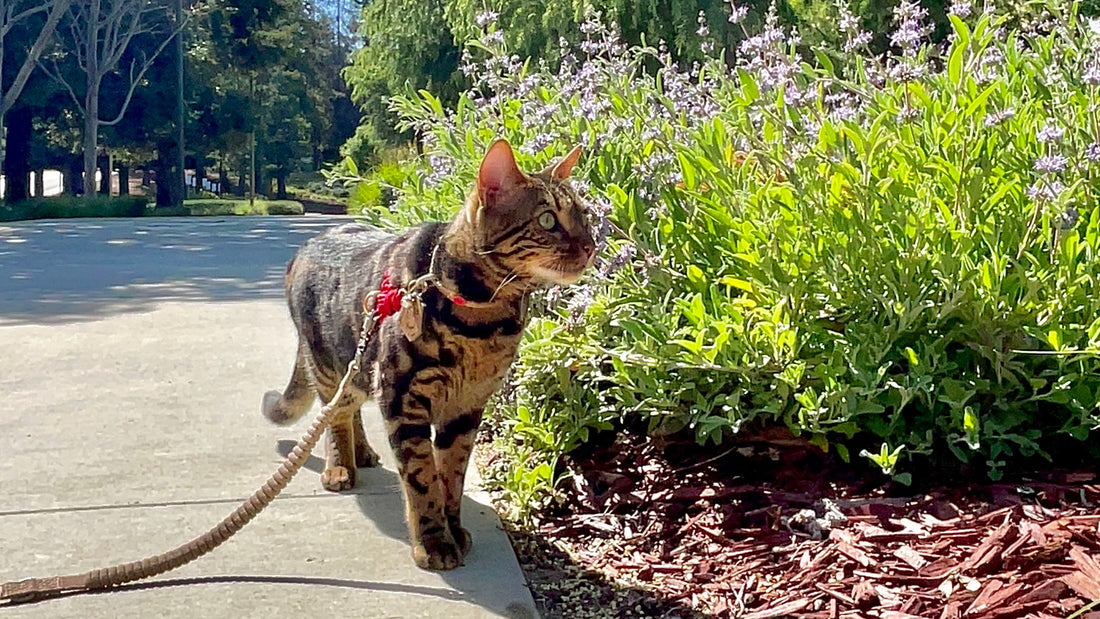
Plants that are toxic to cats
Rae ChenShare
Last week we talked about how dog owners should watch out for toxic plants when their pups go outside and how to create a safe environment for their pups at home! This week, it’s all about our feline friends and how we provide a safe environment for our lovely and sneaky friends.
Here are the top 15 plants to avoid for cats.
-
Lilies: Many people love lilies because they are a beautiful and fragrant flower; however, they are highly toxic to cats. Even a small nibble on any part of the plant, including the petals, leaves, pollen, or even drinking the water from a vase containing lilies, can lead to severe kidney damage. It is crucial to keep lilies far away from your feline friend's reach to prevent any potential accidents.
-
Sago Palm: The Sago Palm, commonly found in homes and gardens, is incredibly toxic to cats. All parts of this plant contain cycasin, a toxic compound that can cause liver failure and can even be fatal to cats. Keep this plant out of your cat's vicinity or opt for pet-friendly alternatives instead.
-
Aloe Vera: People love this plant because of its healing properties for humans, but it can have the opposite effect on cats. The gel inside aloe vera leaves contains a substance called saponin, which can cause vomiting, diarrhea, and tremors in cats. Make sure to keep aloe vera plants out of your cat's reach or consider opting for safer alternatives.
-
Dieffenbachia: Dieffenbachia, also known as dumb cane, is another popular houseplant appreciated for its vibrant foliage. However, it poses a significant threat to our feline friends. The plant contains calcium oxalate crystals, which can cause severe mouth and throat irritation, leading to difficulty swallowing. Keep this plant away from curious cats who might be tempted to chew on its leaves.
-
Pothos: Pothos, also known as Devil's Ivy, is a common hanging plant appreciated for its heart-shaped leaves and ease of care. However, it also contains insoluble calcium oxalate crystals, which can cause mouth and digestive irritation in cats. Ensure that your feline friend cannot access the plant or consider opting for non-toxic alternatives like Boston Fern or Spider Plant.
-
Cutleaf Philodendron/ Monstera Deliciosa: This is one of trendy pet plant that many people have in their house. It is a low maintenance plant and its stunning shapes makes it one of the popular home decor items. However, it you are a cat owner, please don’t keep this trendy pet plant in your house as it is also highly toxic plant to cat.
-
Jade plants: Also known as money plant, it is a succulent that is very easy to grow. People love to keep them at home and believe that this plant can bring good fortune to them. This adorable lucky charm is highly toxic to both cats and dogs.
-
Snake plants: Snake plants are another popular home plant that people love to keep in their home. It’s a super easy pet plant to have; it doesn’t require much sunlight and it can also help improve air quality in the house. However, these plants are highly toxic for cats and dog if they ingested.
-
Lily of the Valley: Even though this is not the part of the lily family, they are toxic to cats. Ingesting any parts of the plant can lead to vomiting, weak pulse, diarrhea and irregular heartbeat. Please make sure to keep this plant away from your cats.
-
Oleander: All parts of the oleander plant, including the flowers, leaves, and branches, are highly toxic to cats. Ingestion can result in symptoms like vomiting, diarrhea, abnormal heart rate, and even death.
-
Tulips: The bulbs of these spring-blooming flowers are also in the lily family, and it contain toxins that can cause gastrointestinal upset, drooling, and in more severe cases, heart problems, and difficulty breathing. At high toxic levels, ingestion may lead to cardiac abnormalities. It will not be a good plant to keep at home when you have feline friends in your home.
-
Hyacinth and Daffodils: The bulbs of these spring-blooming flowers contain toxins that can cause gastrointestinal upset, drooling, bloody diarrhea and in more severe cases, heart problems, and difficulty breathing.
-
Yew: The yew plant, commonly used in landscaping, contains a toxic substance called taxine. Ingestion of any part of this plant can lead to symptoms like trembling, difficulty breathing, seizures, and even cardiac arrest.
-
Bird of Paradise: This exotic flower has a distinct look - you won't miss them when you see them. While they may be beautiful, they are toxic to your feline friend and they could cause mouth irritation, drooling, vomit, diarrhea if your cat ingests them.
-
Poinsettia: This is the festive flower you normally see during the holiday season. The milky sap can cause mouth and skin irritation, stomachache, vomit, drooling and skin irritation. Even though this flower isn’t highly toxic to your cat, it’s still best to keep it away from your cat.
For a more comprehensive list of toxic plants, check out: Toxic and Non-Toxic Plant List - Cats | ASPCA and don’t forget to check out our list for your pup: Beware of toxic plants: how to protect your dog’s environment – Omni Pet Club ™
As a cat owner, it’s our responsibility to keep our cats safe! Let’s build a safe environment at home for our feline friends. Don’t forget to keep your eye out for the toxic plants listed above when you travel with your cat or walk them! Being alert wherever you go can help you prevent many accidents. If you suspect your cat has eaten a toxic plant, please contact your vet right away or seek emergency vet care. It will be best if you can identify what your cat has eaten; that can help your vet treat your cat better.
